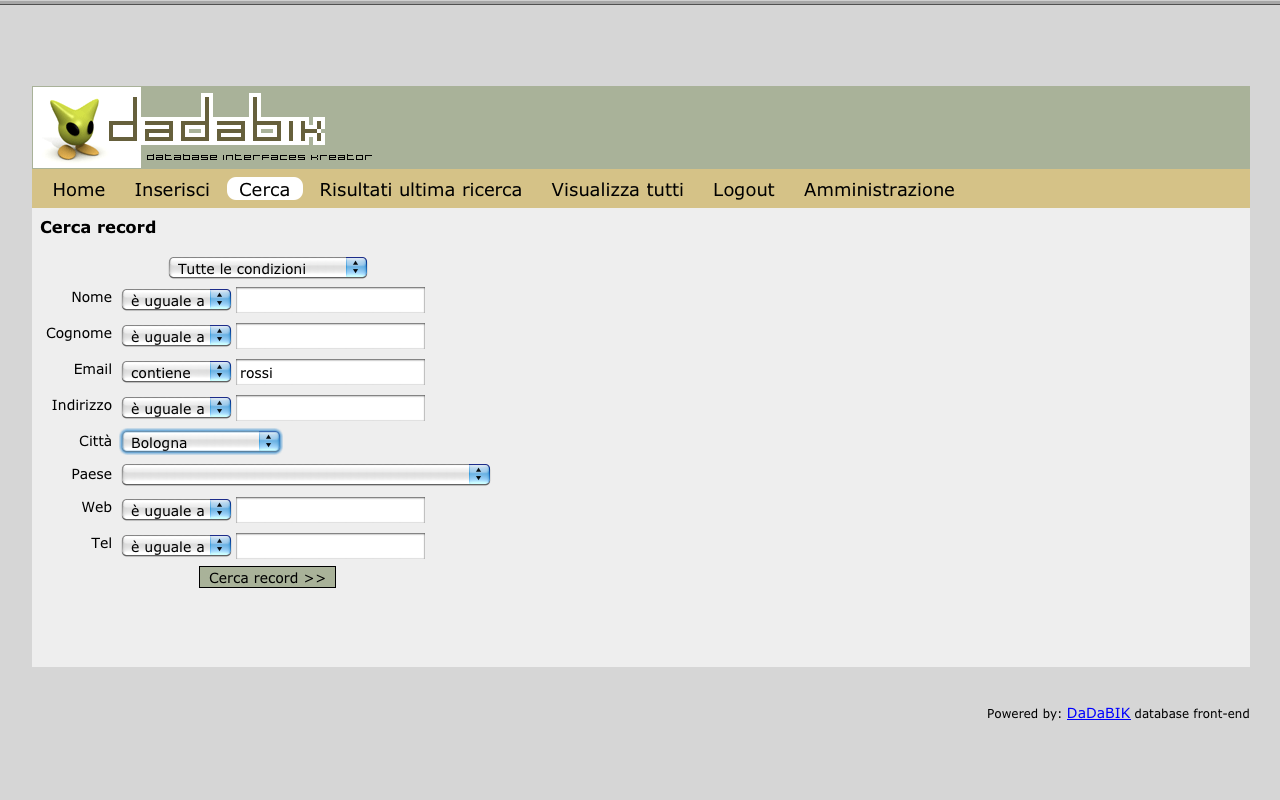
Dadabik is Free Software that you can use (writing little or no code by hand!) to create PHP-based Web applications that even users with little previous experience can use to manage several types of (already existing) relational databases.
I’m happy to report that, after a quite long stop, development of DaDaBIK recently restarted. The result, which you can see in the screenshots in this page, is version 4.3: the images come by a demo accounting application created using DaDaBIK without writing any code manually.


With the Web database applications developed with DaDaBIK you can directly insert images or any other type of file in the database. The applications are also themable, so it is easy to visually integrate them in your already existing website.

DaDaBIK is developed in Italy by Eugenio Tacchini, but the interface and documentation for users and developers are also available in English and other languages.
DaDaBIK is NOT PhPMyAdmin!
An important thing that you should not overlook is that DaDabik is not an alternative to programs like PHPMyAdmin. I asked Eugenio to explain the difference, and this is how he summarizes it:
The goals of PhPMyAdmin and DaDaBIK are different and in a sense they complement each other. PhPMyAdmin is a ready-to-use DB administration tool, while DaDaBIK is software to create, in the simplest possible way, generic Web interfaces aimed at unexperienced end users. Another very important difference between the two programs is that DaDaBIK is database agnostic. Today it already supports MySQL, PostgreSQL, Oracle and SQL Server and I plan to add support for even more databaseS in the future, starting with SQLite and IBM DB2.